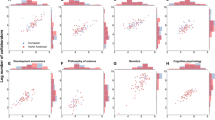Abstract
Analyses the growth of funded and collaborative research publications and authors as reflected in selected theoretical population genetics literature from 1956–60 to 1976–80. Indicates that the number of funded and collaborated publications has not proportionally increased along with the growth of total research publications and authors with time, but however, there is a strong correlation between the two. Indicates the extent of multi-authored research publications in different countries, and studies the growth of multi-authored publications from 1956–60 to 1976–80. Studies the impact of funding and collaboration on the productivity of authors over a period of time. Concludes that the authors who are more productive are generally found to be more collaborative and funded. The average productivity per author is observed to be larger in funded and collaborated authors subset and smaller in non-funded and non-collaborated authors subset, than the average productivity per author in the total authors subset in all the five block years studied. There is a systematic increase with time in the average productivity per author in the funded and collaborated authors subset. Studies the nature and type of collaborated research from 1956–60 to 1976–80, and the role of funding. Highlights the research priorities of few important countries in collabortive research. Indicates the collaboration linkages among various countries in transnational collaborative research. Concludes that with time, the focus of research is slowly shifting from internal collaration to domestic and international collaboration, supported by increasing funding from government agencies in theoretical population genetics research.
Similar content being viewed by others
References
D. De. B. Beaver, R. Rosen, Studies in scientific collaboration 1. The professional origions of scientific authorship,Scientometrics, 1 (1978) 65–84.
D. De. B. Beaver, R. Rosen, Studies in scientific collaboration 2. Scientific co-authorship, research productivity, and visibility in the French scientific elites,Scientometrics, 1 (1978) 133–149.
D. De. B. Beaver, R. Rosen, Studies in scientific collaboration 3. Professionalisation and the natural history of scientific co-authorship,Scientometrics, 1 (1978) 231–245.
M. L. Pao, Global and local collaboration: A study of scientific collaboration,Information Processing and Management, 28 (1992) 99–109.
D. J. De Solla Price, D. De B. Beaver, Collaboration in an invisible college,American Psychologist, 21 (1966) 1000–1018.
H. A. Zuckerman, Noble laureates in science: Patterns of productivity, collaboration and authorship,American Sociological Review, 32 (1967) 391–403.
M. L. Pao, Collaboration in computational musicology,Journal of the American Society for Information Science, 33 (1982) 38–43.
N. Pravdic, V. Oluic-Vukovic, Dual approach to multiple authorship in the study of collaborator/scientific output relationship.Scientometrics, 10 (1986) 259–280.
D. J. De Solla Price, Citation measures of hard science, soft science, technology and non-science. InC. E. Nelson, D. K. Pollak (Eds),Communication among Scientists and Engineers, Lexington, M. A.: D. C. Health, 1970, p. 3–22.
A. G. Hafner, Funded research, multiple authorship, and sub-authorship collaboration in four disciplines,Scientometrics, 3 (1981) 5–12.
K. S. Subramanyam, E. M. Stephens, Research collaboration and funding in biochemistry and chemical engineering,International Forum on Information and Documentation, 7 (1982) 26–29.
B. M. Gupta, S. Kumar, C. R. Karisiddappa, Collaboration profile of theoretical population genetics speciality,Scientometrics, 39 (1997) 293–314.
K. Subramanyam, Bibliometric studies of research collaboration: A review,Journal of Information Science, 6 (1983) 33–38.
J. Qin, An investigation of research collaboration in the sciences through the Philosophical Transactions,Scientometrics, 29 (1994) 219–238.
J. Sylvankatz, Ben R. Martin, What is research collaboration?,Research Policy, 26 (1997) 1–18.
J. Felsenstein,Bibliography of theoretical population genetics, Pennsylvania; Dowen Hutchinson & Ross, Inc. 1981.
Diana Hicks, J. Sylvan Katz, Science policy for a highly collaborated science system.Science and Public Policy, 23 (February 1996) 39–44.
P. S. Nagpal, Lalita Sharma, Research output and transnational cooperation in physics subfields: A multidimensional analysis,Scientametrics, 31 (1994) 97–122.
National Science Board,Science and engineering indicators—1996. Washington, DC.; U.S. Government Printing Office, 1997.
Author information
Authors and Affiliations
Rights and permissions
About this article
Cite this article
Gupta, B.M., Karisiddappa, C.R. Collaboration in theoretical population genetics speciality. Scientometrics 42, 349–376 (1998). https://doi.org/10.1007/BF02458377
Received:
Issue Date:
DOI: https://doi.org/10.1007/BF02458377



